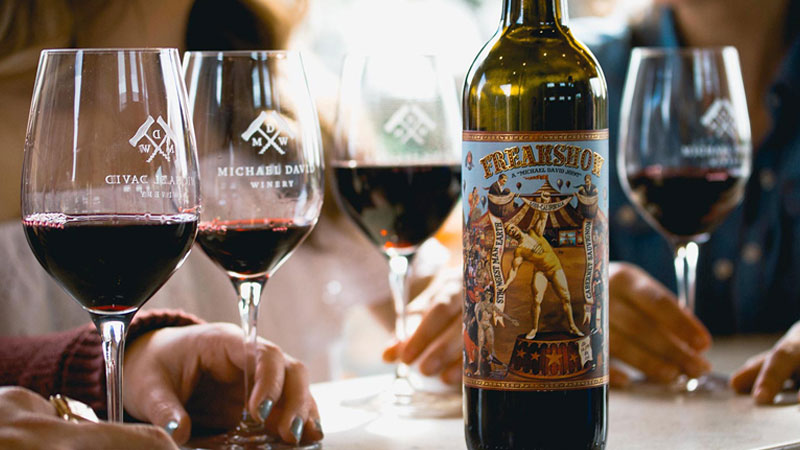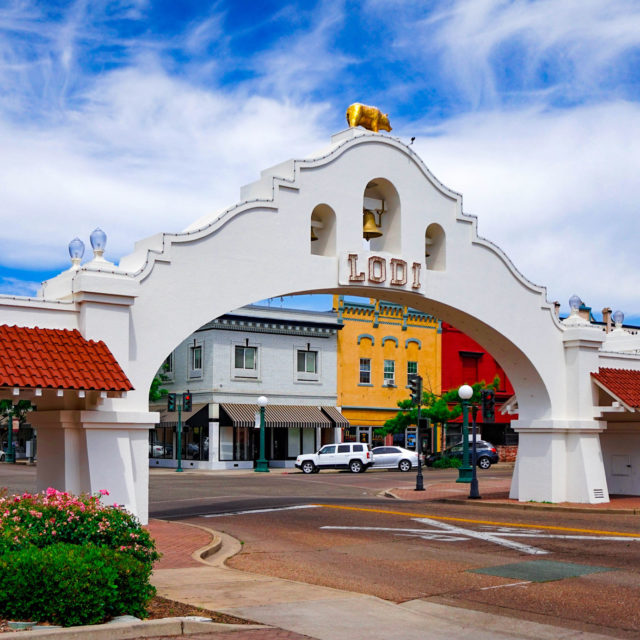The dusty streets of Lodi, Calif., are quiet on a warm autumn afternoon. Birds lap water pooling on the sidewalk under tree-lined streets. Department stores vacated the two-story brick buildings decades ago, leaving behind a handful of vintage boutiques, an old-fashioned deli, and a cheese shop. Bells twinkle overhead when a shopper opens a door and walks into the otherwise empty downtown.
You wouldn’t know it by looking around, but this small agricultural town is the gateway to one of the top wine regions in the country.
“Lodi is like Napa used to be 30 years ago,” Michael McCay, owner of McCay Cellars, says.
Here, unassuming family wineries dot the two-lane country roads. Fourth- and fifth-generation farmers and winemakers pour modestly priced tastings of their wines as they chat with visitors about their processes, the region, the vines, and their families.
As Napa and Sonoma soak up the spotlight, winemakers in Lodi have quietly started producing some of the state’s best wines. To be taken seriously as a wine region, however, Lodi needs to shake off its connotation of unimpressive bulk, mass-produced, and commodity wine.
“It is a part of Lodi’s history that is undeniable,” Dan Panella, owner of Oak Farm Vineyards, says. “However, things have changed dramatically in the past 10 to 15 years in a number of areas that are trending towards more and more quality wines with Lodi on the label.”
Lodi’s position in Northern California’s Central Valley puts it among the state’s most prolific grape-growing regions. With the help of fertile soil, optimal weather, and the Sacramento River Delta’s cooling breeze, farmers have been growing grapes in bulk here since the mid-1860s. It’s the largest grape-growing region in California, with more than 100,000 acres under vine.
In the past 20 years, the number of wineries has increased from fewer than 20 to more than 70, and continues to grow, says Melissa Phillips Stroud, vice president of sales and marketing of Michael David Winery. Michael David is responsible for hip labels like Freakshow, Ink Blot, Earthquake, and popular 7 Deadly Zins, which it recently sold to The Wine Group.
The family-owned winery has a long history of farming in Lodi, starting 150 years ago. In 1984, two brothers, Michael and David, started the winery in an old hay barn. Unlike other local, family-run wineries that produce 5,000 cases per year, Michael David makes about 1.2 million cases annually.
For better or worse, Lodi is also known as the Zinfandel capital of the world, producing 40 percent of California’s Zinfandel. During the growing season the days are hot and dry, but the nights are cool. Dense fog rolls in early in the morning, blanketing the grapes with moisture. This Mediterranean climate is perfect for growing Zinfandel and Rhône varietals.

Gnarled, 100-year-old vines are used as decorations in wineries, tasting rooms, and restaurants around town, but the new crop of wine producers want the world to know they can make more than just a big, jammy red.
In fact, more than 100 varietals are grown in the area, including some of the oldest Cinsault and Aglianico vines in the world. In recent years there’s been tremendous growth in international grape varieties such as Albariño, Verdelho, Vermentino, Carignan, and Grenache.
“There’s also a willingness to experiment with alternative varietals beyond Zinfandel, Chardonnay, or Cabernet Sauvignon. While those varietals are important, Lodi has the terroir to support and grow over 100 different varietals,” Panella says. “Since the cost of the ground is significantly less expensive than it is for those to the west of us in Napa and Sonoma, we are able to take more chances. If something doesn’t work, we will pull it out and replant or graft it over to something else.”
Five Lodi Wines to Try
Acquiesce Winery 2017 Belle Blanc
Acquiesce Winery doesn’t even bother making reds. The standout in the winery’s long list of whites is its signature Belle Blanc, a Châteauneuf-du-Pape-style blend that is crisp and flinty while its Sparkling Blanc is made with the uber-rare variety Grenache Blanc. Average price $28.
Klinker Brick 2017 Albariño
Refreshing and crisp with relatively low alcohol, Kinker Brick’s Albariño is similar in style to what wine drinkers find in the Iberian Peninsula. Average price $16.
Michael David Winery 2015 Freakshow
Big, spicy, and packed with ripe fruit flavors, this Cabernet Sauvignon is always a hit with wine critics. Average price $16.
McCay Cellars 2015 Tempranillo
Spain’s famous grape thrives in Lodi’s Mediterranean climate. With spicy aromas and flavors of plum and strawberry, try this with grilled meats and smoky dishes. Average price $28.
Oak Farm Vineyards 2018 Fiano
Not many California winemakers attempt to make this southern Italian classic. Panella’s family hails from the Avellino region of Italy, so for him the floral-and-honey white is a nod back to the old country. Average price $26.
